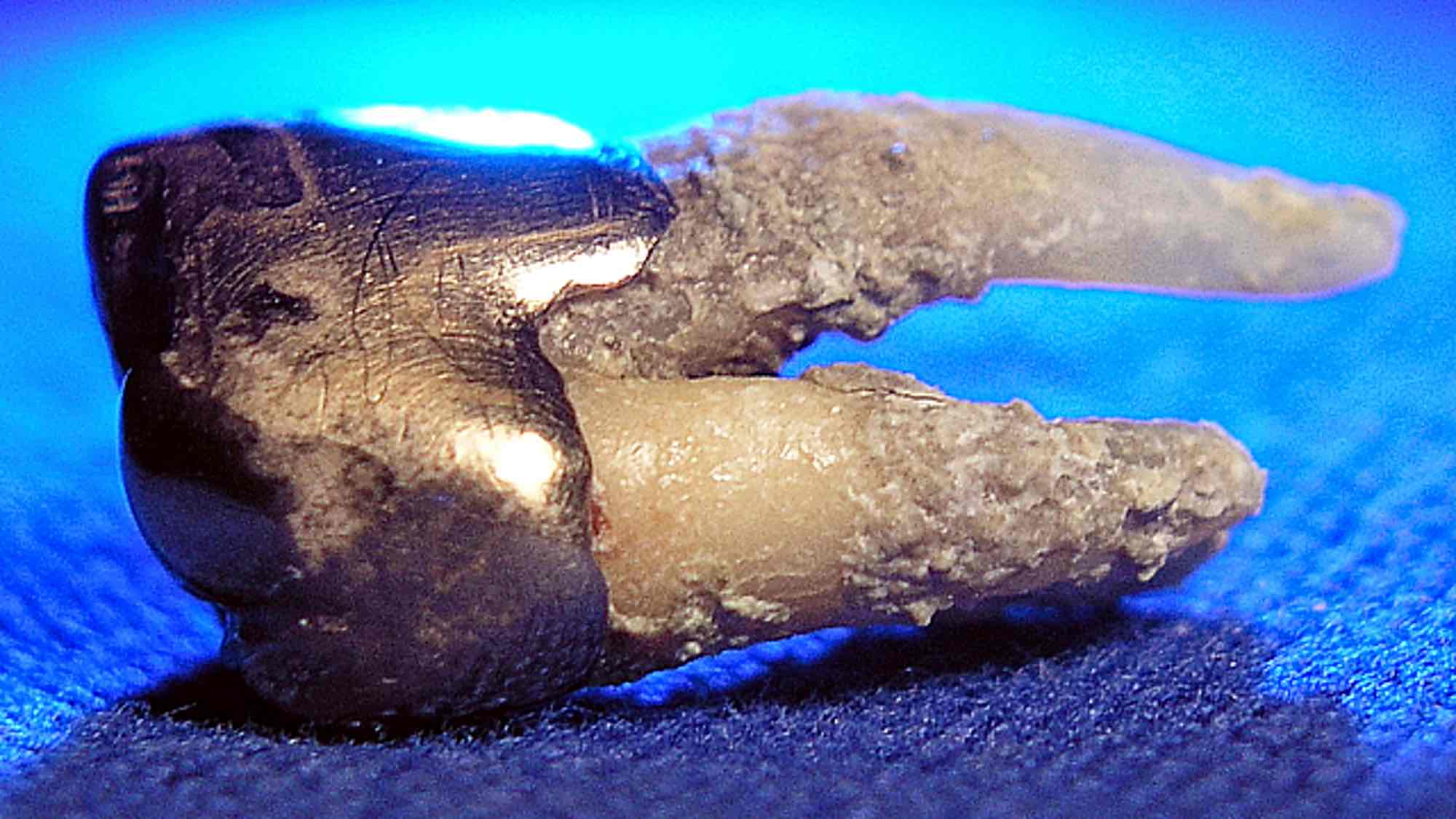Subgingival calculus
What is subgingival calculus?
Supragingival calculus – we’ve already learned this elsewhere – is calcified dental plaque. It’s soft and rough like pumice. And it’s visible to the eye, meaning it’s above the gum line.
Subgingival calculi are completely different. These are brownish-gray deposits on the root surface in gum pockets, thus hidden from view. And they’re as hard as concrete.
Their formation is different from that of tartar. You need to know that a light film of fluid always forms in the gum pockets, which we call sulcus fluid. This is produced by the gums on the inside of the pocket. – Got that clear?
When the gums are inflamed, the composition of the sulcus fluid changes. It now contains many proteins, minerals from the blood, and other substances from the blood serum. This entire package then begins to deposit on the root surface in the gum pocket. And grows very slowly. And that’s an unmistakable sign of periodontitis!
What this means for you
You have no chance of feeling or even seeing subgingival calculi unless your gums have already receded significantly due to periodontitis! Subgingival calculi are detected during preventative care or during a dental examination. They can often be seen on x-rays, but only when they are already quite large.
You can see the size of these calculi in the image accompanying this chapter: this is an extracted tooth with an old gold crown. You can see crust-like deposits on the root. These are subgingival calculi, which are usually covered by gum tissue.
What you should do
Now you book a prophylaxis session with your trusted dentist. The ladies can tell you if you have any subgingival calculus. If you do, then you’re currently experiencing or have had a periodontal flare-up (periodontitis doesn’t develop continuously… it comes in flare-ups).
Why am I talking about the “ladies” in prophylaxis here? – Worldwide, men are in the absolute minority in this field. This is probably because women have a much more delicate touch than men when it comes to removing calculus. Because… strictly speaking, it’s a kind of blind flight. The subgingival calculus is invisible on the root surface. You carefully and painlessly go into your pocket with the appropriate, fine instruments and palpate the root surface. If such a calculus is felt, it is removed.
And if you don’t book prophylaxis?
My opinion is that everyone has the right to neglect themselves in their own way. And that’s exactly how it is!
I’ll recap: subgingival calculi are a sure sign of periodontitis. A SURE SIGN! – Arrived???
And they have a rough surface, like supragingival calculus. The rougher the surface, the more easily it is colonized by plaque. And this plaque in the pockets further fuels periodontitis (I’ll describe this in more detail elsewhere).
So if you ignore all of this, the bone loss in your teeth will continue to accelerate until you lose teeth. And one thing is certain: even with the best dentures, you’ll chew worse than with your own teeth!
And why do some people have subgingival calculus but others don’t?
In addition to so many factors such as diet, bad habits like smoking, oral hygiene, etc., your genes, or rather your DNA, play a central role. It’s a fact!
If you want to join the winning side, then visit your dentist regularly for preventative care. They will also explain your weaknesses when brushing your teeth (dentists have these too!) and what you can do better. And this won’t be explained to you by a health column in the newspaper, but by someone who is extremely knowledgeable about the subject!
Author: drw

